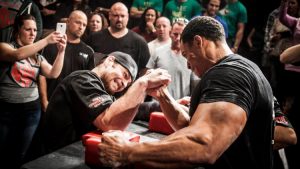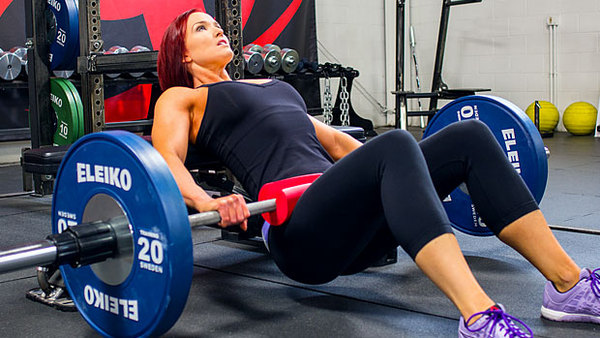“Do not judge a man’s strength by the size of his biceps. Things do not always look what they seem.”
– Pavel Tsatsouline
In my opinion a normal human being should aim to be strong. And when I say strong, I’m not talking about those bulked individuals with a strange gait. Anyone (of any age) can become stronger by working consistently for this. Unfortunately, most people are more WILLING to be strong than doing what they need TO DO to be strong. Yes, these are different things. And yes, it’s not easy. One thing is WANTING a top-of-the-range Porsche, another thing is DOING the things needed to have a top-of-the-range Porsche. With strength is the same situation. To be strong, you need to have a plan (or have someone design a plan for you) and to work consistently to execute that plan – this is what your objective should be: to execute the plan. That’s it. You do not become what you THINK about every day, you become what you DO every day. Yes, there are no miracles, no one gets stronger without effort and without spending the time necessary for that to happen. The fitness magazines and the marketing associated with this industry want to make you believe that it’s possible to get stronger or leaner without great effort and quickly. It’s because of these kinds of messages that people still believe in shortcuts and / or allude to the power of genetics. They want it all but they don’t do anything (nothing useful at least). And then they still blame genetics!
There is one thing you should be aware of right now, strength is a skill. And in this sense, strength is the ability to generate more tension in muscles. And that is why strength is the basis for the development of speed, endurance and even flexibility. Like all skills, there are techniques or more appropriate ways to develop it. And that’s what I’m going to share with you. I will teach you some techniques for you to get stronger faster but this will only work if you apply them consistently in training. So, do them! Some of these techniques have already been used with me and with my clients / athletes, so I can assure you that they work and that they are scientifically proven, if that interests you as well. And before explaining them, I want to refer to Pavel Tsatsouline (I love reading his books), since he has been one of the individuals who has shared most of the “Russian secrets” of strength and one of the persons who have inspired me most in this journey. I hope I can meet him someday. Ready? Let’s do it!
- Irradiation
This one is easy, this one any five-year-old understands.
First make a bicep curl set of 5-6 repetitions with good form, keeping the elbow close to the body and without tilting the trunk back. You can use a dumbbell or a barbell. But a serious dumbbell, it’s not worth using Barbie and Ken-style dumbbells, let these tools for people to have fun in aerobic classes! After doing this set, rest for a few minutes and make the following changes: before doing the movement again, i) squeeze hard the dumbbell or barbell; (ii) squeeze your glutes as if you wanted to crack a nut with your buttocks and (iii) tighten your abs and imagine that Mike Tyson will punch you in the stomach.
If you can do these three things, you will realize that the weight will get lighter and you will be able to do a few more reps – in a better and safer way. The explanation is this: when you create tension at various points in the body this will increase total body stability (via the neural impulses produced by the contracting muscles) and this stability / force will irradiate (i.e. spread) to the neighboring muscles as if it were an electric current to start the engine. And the most interesting part lies on the fact that the strength of a particular muscle, for example the bicep, can be amplified if the neighboring muscles also help! Have you realized why in the union lies strength? The formula is simple: more tension = more stability = more force.
- Bracing
Who still does arm wrestling in school? I perfectly remember the times when I was in school and this was one of the games we did in during class breaks or when we had a hole in our schedule. I remember very well the agonizing look of my classmates when they were about to be defeated or their expression of jubilation when I let them gain advantage and then finished strong. Yes, this was fun at the time! And yes, most of the time I won ?.
I gave the example of arm wrestling because I think this is the best way to understand this phenomenon. Lets’ see: an individual who can generate more tension before squeezing his opponent’s hand will have a superior neuromuscular activation level and a clear advantage over an individual who only begins to squeeze when someone (the referee) gives the signal to begin the “combat”. According to Prof. Yuri Verkhoshansky, if we create a sort of pre-tension in the muscles before starting a dynamic contraction, this can lead to increases of up to 20% in performance! Now imagine the advantage you can have if you can apply this technique and if your opponent does not know about it.
Try this technique as follows. Do five normal push-ups and relax on the floor between reps. Then do another five and this time think about creating tension in the whole body, that is, think of squeezing your glutes and abs before pushing against the floor to come up. If you do this well, you will realize that you are much stronger than you thought. Therefore, the key to this technique is in creating tension in the whole body before counteracting resistance. If you do not create this tension before, you will remain weak. Do not be that person.

- Power Breathing
First, a few notes on breathing. Proper breathing is very important to maximize performance, a normal person breathes on average more than eight million times a year and it is more likely that he will not do it efficiently. If there was a movement pattern that you had to repeat 23,000 times a day, would you not make an effort to improve it? Think about this a little bit. Most people only use a small percentage of the body’s ability to extract oxygen from the air into the lungs because they tend to breathe only with the upper body (apical breathing), instead of breathing deeper by using the most efficient respiratory muscle we have, the diaphragm (I think we do not talk much about the diaphragm in fitness / bodybuilding magazines because this is an invisible muscle that will not really impress women). But the fact is that this daytime breathing will affect several things: your recovery ability, your anatomical structure, the functioning of your autonomic nervous system, and your cognitive ability. So, if we are talking about performance optimization, be sure to improve your breathing patterns as well.
Second, regarding power breathing, this technique consists of holding the breath during the various phases of lifting. For example, the legendary Bruce Lee used to say that in the martial arts the power of breathing was more important than body strength. In general, the effect of breathing patterns and intra-abdominal and intra-thoracic pressure on strength is strangely ignored or misunderstood by fitness professionals and some medical authorities. These authorities seem to forget that orthopedic injury is much more common than cerebrovascular injury. That traditionally taught breathing pattern of inhaling when we lower the weight (eccentric phase) and exhaling when we raise the weight (concentric phase) may be useful in some cases (and we can’t say that’s wrong) but it’s not the one you want to do when you want to generate as much tension / strength as possible in the muscles. Why? Because the increase in intra-abdominal and intra-thoracic pressure will boost muscle excitability (through the pneumo-muscular reflex) and it is this process that will guarantee more stability in the spine and that will amplify your strength. This is the most natural way to produce strength! Yes, your fitness instructor may have said that forced exhalation of air against the glottis (i.e. the Valsalva maneuver) is hazardous to your health and that you may have a stroke doing this. But is this assertion correct? Prof. Yuri Verkhoshansky and Dr. Mel Siff, two of the world leading authorities on strength training, say the following in this regard in the book Supertraining, one of the strength training bibles:
“For example, the Valsalva maneuver associated with holding breath has a vital role in increasing intra-abdominal pressure to support and stabilize the lumbar spine during heavy lifting… It has been corroborated on many occasions that stress on the spine is decreased during any movement against high resistance and that exhalation during lifting increases the risk of injury to the lumbar spine. Thus, it is unwise to follow popular medical advice that people must exhale during the effort”. The authors further add: “while this may be appropriate for patients with heart disease or hypertension, this same action performed by an athlete who is doing squats or heavy lifting overhead, can seriously compromise spine stability and safety”.
Got it? This means that any healthy person can and should apply this technique if they aim to get stronger and lift heavy loads in a safe way. People with hypertension and heart disease should be more cautious in this regard but please note: this is not to say that they can’t strength train, there are many other ways to develop strength. By the way, it is already well documented in the scientific literature that these people can and should do strength training to improve their condition!
- Successive Induction
Successive Induction, such as the Law of Irradiation we have seen above, is another of the Sherrington Laws exploited to the maximum by the Russians. According to this law, contraction of a muscle – for example, the triceps – will make your muscle antagonist – in this case, the biceps – stronger than normal. In the early 1980s scientists suggested that this technique had a disinhibiting effect and later confirmed that a strength training program that included pre-tensioning an antagonist muscle (i.e. successive induction) was more effective than a program of conventional training. And the most interesting thing is that these benefits were not only limited to an acute performance increase, but also resulted in long lasting strength improvements.
Do the following test. Grab a barbell or free weight and get ready to make a bicep curl set with a load that allows you to do 5-6 solid repetitions. Remember, hold your elbows close to your body and do not lean your trunk back. Do one set and count the number of repetitions you can do with good form. After resting for a few minutes, keep the same weight and do another set, but this time using this new technique. When you bring the weight up, apply the other techniques you already know (irradiation and bracing) and on the descent apply the technique of successive induction, “pulling” the weight down with the triceps. In this way, you will give the biceps some rest on the descent (by preventing them from locking the movement) and will allow the triceps to also have a more active participation in the movement. You should expect to be able to do one or two more reps this way!
Therefore, when applying this technique, you will have two engines controlling the movement. And because of the co-contraction of both muscle groups, this technique may also offer greater benefits in terms of joint stability since the stress on them will be reduced (note: do not forget to discuss this with your doctor if you have joint problems).
Finally, my advice to you is this: if you want to start lifting heavy loads safely begin applying these principles in training (if you can’t do this alone ask someone you know to help you) and enjoy learning one of the skills (i.e. strength) you will need most to optimize your health. And be patient, do not expect to learn all these things from one day to another – it takes time and practice, good practice of course.
See you soon!
Pedro Correia
References
Tsatsouline, P. (1999). Russian Strength Training Secrets for Every American. Dragon Door Publications.
Tsatsouline, P. (2003). The Naked Warrior. Master Secrets of the Super Strong – Using Bodyweight Exercises Only. Dragon Door Publications.
Verkhoshansky, Y; Siff, M.; (2009). Supertraining. Sixth Edition – Expanded Version. Ultimate Athlete Concepts.
Verstegen, M.; Williams, P. (2014). Every Day is Game Day. Penguin Group.

